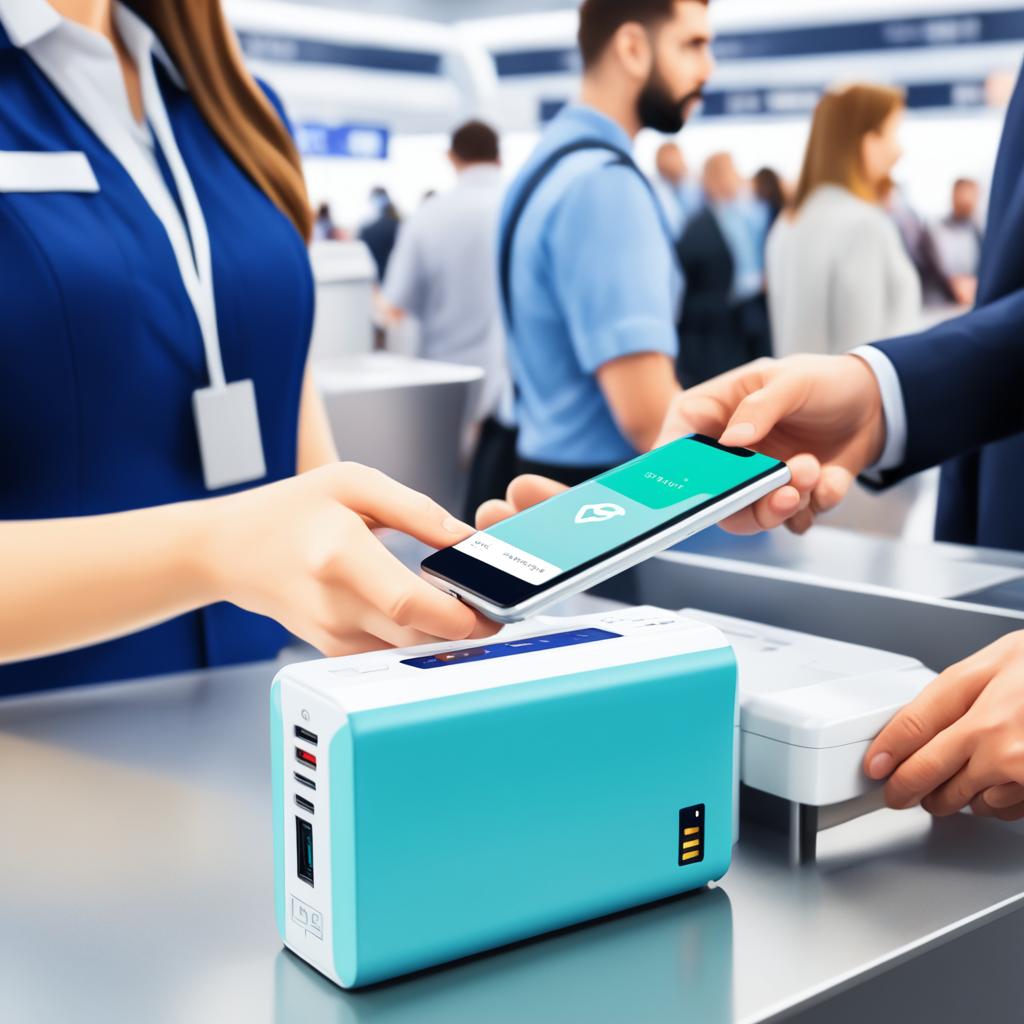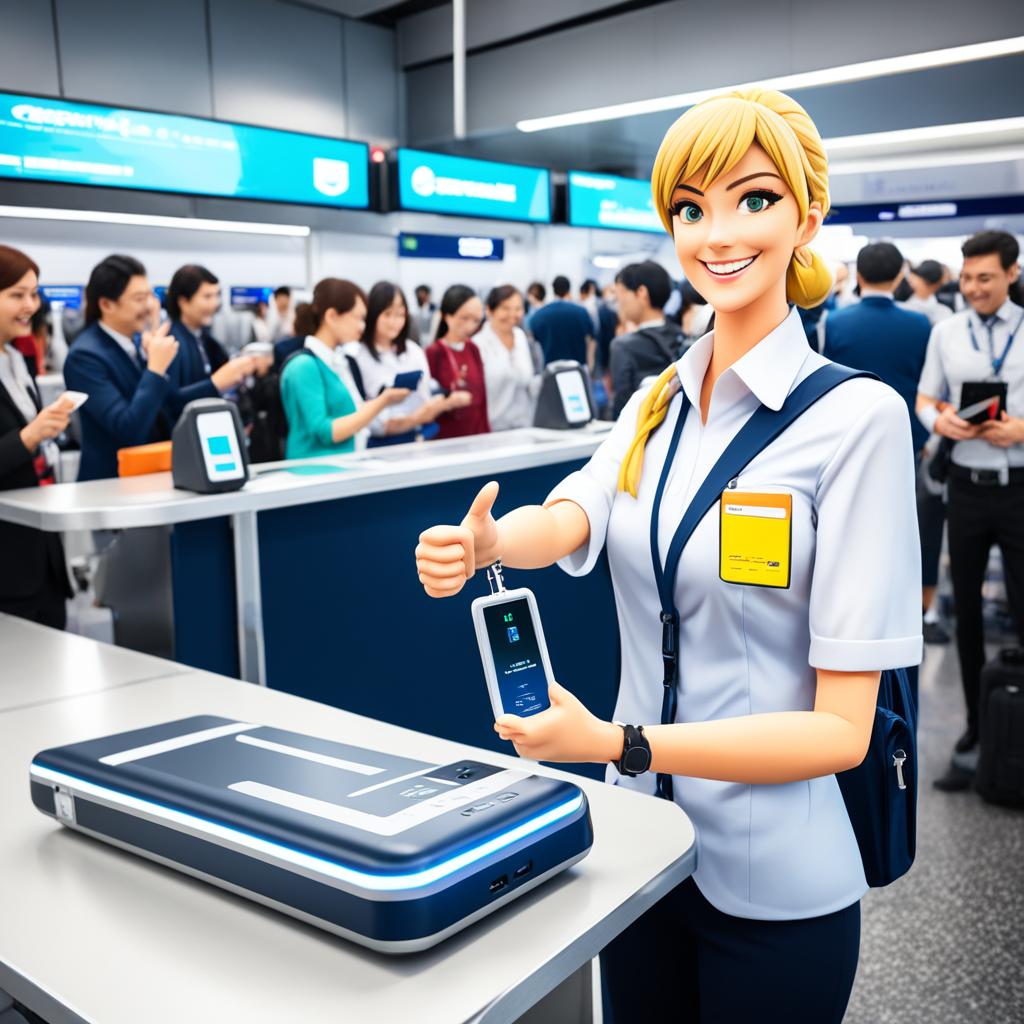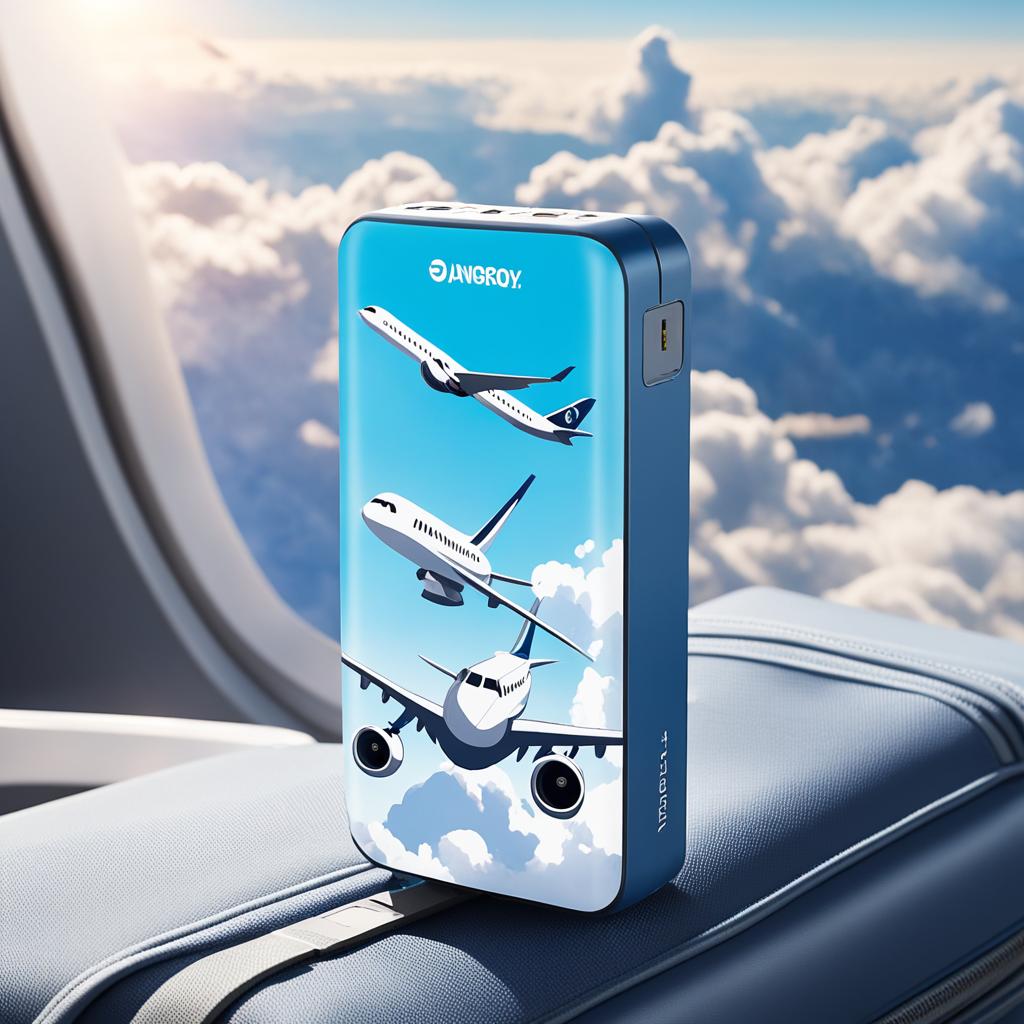When it comes to traveling with electronic devices, a reliable power bank is a must-have accessory. But before packing your bags, you might be wondering, “Is the 20000mAh power bank allowed in flight?” It’s a valid question that many travelers need answers to. Let’s explore the regulations and guidelines surrounding power banks on flights to ensure you are well-prepared for your journey.
Understanding Power Bank Regulations on Flights

Power banks are considered essential travel accessories for many people, especially in a world reliant on electronic devices. However, it’s important to understand the regulations surrounding the carriage of power banks on flights. While power banks are not prohibited items in flight, there are specific rules that need to be followed. These regulations can vary based on the airline and country.
Before your flight, it’s advisable to check the list of dangerous and restricted items provided by your airline. Power banks are not allowed in check-in luggage due to the potential safety risks associated with lithium-ion batteries. Instead, they must be carried in your cabin luggage to ensure the safety of passengers and crew.
Airlines often ask passengers if they are carrying a power bank during the check-in process and may request it to be moved to cabin luggage. Compliance with these regulations is essential to prevent any last-minute surprises or issues while traveling.
Power Bank Regulations Checklist:
- Check the list of dangerous and restricted items provided by your airline
- Do not pack power banks in check-in luggage, carry them in your cabin luggage
- Be prepared to move power banks from check-in to cabin luggage, if required by the airline
By following these regulations, you can ensure a smooth and hassle-free travel experience with your power bank. Now that you are familiar with the regulations, let’s discuss the specific capacity requirements and flight approval process for power banks in the next section.
Power Bank Capacity and Flight Approval

When it comes to carrying a power bank on a flight, the capacity of the power bank plays a crucial role in determining whether it requires airline approval. The capacity of a power bank is measured in watt-hours (Wh), and different airlines have specific regulations regarding the maximum capacity allowed onboard.
A power bank with a capacity of less than 100Wh is generally allowed in cabin luggage without seeking prior approval. This means you can conveniently carry it with you during your flight without any additional documentation or authorization.
However, if your power bank has a capacity between 100Wh and 160Wh, it may require airline approval before being allowed on board. This means you need to check with your airline to verify whether they allow power banks within this capacity range and if any additional steps are necessary to gain approval.
It’s important to be mindful of the capacity of your power bank before your flight to ensure compliance with airline regulations. To calculate the watt-hours of your power bank, you can use the formula: Watt-Hours = Milliamp Hours/1000 x Voltage. This will help you determine whether your power bank falls within the permitted capacity limits.
For instance, let’s consider a power bank with a capacity of 20000mAh. By applying the formula, we can find its watt-hours to assess its compliance. Since 20000mAh is equal to 20Ah, we divide this by 1000 to convert it to 20Wh, which is less than 100Wh. Therefore, a 20000mAh power bank falls within the permitted capacity, allowing you to carry it on your flight without seeking airline approval.
Remember, it’s always advisable to consult with your airline regarding their specific requirements for power bank capacity and approval. This will ensure a smooth journey and help you avoid any surprises or issues related to power bank compliance.
Carrying Power Banks Safely on Flights
When it comes to traveling with your power bank, safety should be a top priority. Follow these guidelines to ensure a smooth and secure experience on your flights:
- Carry power banks in your carry-on luggage rather than in checked-in baggage. This allows for better monitoring and control of any possible safety risks related to lithium-ion batteries.
- Ensure your power bank is in good condition and not damaged. If your power bank is subject to any recall notices, it’s best to leave it behind and not bring it on your flight.
- Make sure your power bank is fully charged before your flight. During security checks, your power bank may be subject to testing, so having it fully charged will help expedite the process.
- It’s important to note that power banks should be for personal use only and not intended for sale or distribution.
To further understand the regulations and guidelines for carrying power banks on flights, familiarize yourself with the specific requirements of the airline you are flying with. By following these precautions, you can help ensure the safety of all passengers and have a hassle-free travel experience.
A Comparison of Power Bank Regulations for Select Airlines
| Airline | Allowed Power Bank Capacity (Wh) | Number of Power Banks Allowed |
|---|---|---|
| Airline X | ≤100 | 2 |
| Airline Y | ≤160 | 1 |
| Airline Z | ≤200 | 3 |
Power Bank Regulations Worldwide

Power bank regulations can vary across different countries and airlines. When traveling with a power bank, it’s crucial to be aware of the specific regulations in place for the country you are visiting and the airline you are flying with.
The International Air Transport Association (IATA) provides guidelines for the carriage of dangerous goods, which includes power banks. While there are general guidelines that most airlines follow, it’s always best to check with your specific airline for their policies and any additional requirements they may have.
Some airlines may have stricter regulations or specific instructions regarding power bank size, capacity, or quantity allowed on board. By familiarizing yourself with these regulations, you can ensure a smooth and hassle-free travel experience without any issues related to power bank compliance.
For more information on power bank regulations, you can visit the IATA website or contact your airline directly. Being well-informed will help you avoid any unexpected surprises and ensure that you are fully prepared when traveling with a power bank.
Consult the table below for a summary of power bank regulations among popular airlines worldwide:
| Airline | Allowed Capacity (watt-hours) | Additional Requirements |
|---|---|---|
| Delta Airlines | Less than 100Wh | Approved for carry-on only |
| United Airlines | Less than 160Wh | Approved for carry-on only |
| Air Canada | Less than 100Wh | Approved for both carry-on and checked-in baggage |
| British Airways | Less than 160Wh | Approved for carry-on only |
Please note that the provided table offers a general overview of power bank regulations and that specific requirements may change over time. It is always best to consult the official website of the airline you are flying with and refer to the most up-to-date information prior to your travel.
Carrying Multiple Power Banks on Flights
When it comes to traveling with multiple power banks on a flight, the good news is that it is generally allowed, as long as each power bank individually complies with the airline’s regulations. However, it’s important to note that there may be limitations on the number of power banks you can carry onboard, depending on the airline.
Each power bank must meet the capacity requirements specified by the airline and adhere to their specific guidelines. Typically, passengers are allowed to carry up to two power banks with a capacity between 101 and 160 watt-hours.
It’s always advisable to check with your airline before your flight to determine their specific policies regarding carrying multiple power banks. This will help ensure compliance with their regulations and avoid any potential issues during your journey.
| Flight Regulations for Multiple Power Banks | Number of Power Banks Allowed | Power Bank Capacity Limit |
|---|---|---|
| Airline A | Up to 2 | 101 to 160 watt-hours |
| Airline B | Up to 2 | 101 to 160 watt-hours |
| Airline C | Up to 3 | 101 to 200 watt-hours |
As seen in the table, different airlines may have varying policies regarding the number of power banks allowed on board and the capacity limits. It’s important to familiarize yourself with these regulations and plan accordingly to ensure a smooth and hassle-free experience while traveling.
Ensuring a Smooth Power Bank Experience on Flights
To ensure a smooth experience when traveling with a power bank, there are a few important steps to follow.
- Confirm power bank capacity: Before your flight, make sure your power bank complies with the capacity regulations of your airline. Check the watt-hours or consult the manufacturer’s specifications to ensure it falls within the permitted range.
- Keep power bank in carry-on luggage: It’s recommended to keep your power bank in your carry-on luggage rather than in checked-in baggage. This ensures easy accessibility and better monitoring during security checks.
- Ensure power bank is fully charged: Before your flight, ensure that your power bank is in good working condition and fully charged. This is important as it may be subject to testing during security checks.
- Familiarize yourself with airline regulations: Each airline may have specific regulations regarding the carriage of power banks. Familiarize yourself with the specific rules and guidelines of the airline you are flying with to avoid any unforeseen challenges or issues.
By following these steps, you can ensure a smooth and hassle-free experience with your power bank while traveling.
Recommendations for Power Banks Allowed on Planes
When it comes to choosing power banks that are allowed on planes, there are a few key factors to consider. The capacity of the power bank is important, as airlines typically permit power banks with capacities below 100 watt-hours. To ensure easy carriage on flights, it’s recommended to opt for power banks from reputable brands that clearly indicate their capacity. This helps avoid any confusion or potential issues during security checks.
In addition to capacity, it’s a good idea to look for power banks with certifications such as FAA (Federal Aviation Administration) approval. These certifications provide added reassurance that the power bank complies with safety regulations. By choosing a power bank with reputable certifications, you can travel with peace of mind, knowing that your device meets the necessary standards.
There are several power banks available on the market that meet these requirements and can be safely carried on planes. It’s always advisable to do some research and read reviews to find the best power bank that suits your travel needs and complies with airline regulations. By investing in a reliable and compliant power bank, you can ensure that your electronic devices stay charged and ready to use throughout your journey.
FAQ
Q: Is the 20000mAh power bank allowed in flight?
A: Yes, a 20000mAh power bank is allowed in flights. However, it’s important to comply with specific airline regulations and carry it in your cabin luggage. It should not be placed in your checked-in baggage.
Q: What are the power bank regulations on flights?
A: Power bank regulations on flights vary depending on the airline and country. Generally, power banks must be carried in cabin luggage and not in checked-in baggage. They should be in good condition and comply with capacity limitations set by the airline. It’s advisable to check with your airline for their specific guidelines.
Q: How does power bank capacity affect flight approval?
A: Power bank capacity plays a role in flight approval. Power banks with a capacity of less than 100Wh can be carried in cabin luggage without prior approval. Power banks with a capacity between 100Wh and 160Wh may require airline approval. Power banks with a capacity exceeding 160Wh are strictly prohibited.
Q: How can I carry power banks safely on flights?
A: Power banks should be carried in your carry-on luggage and not in checked-in baggage. They should be in good working condition and fully charged. Power banks are for personal use only and should not be intended for sale or distribution.
Q: What are the power bank regulations worldwide?
A: Power bank regulations can vary across different countries and airlines. It’s important to familiarize yourself with the regulations of the country you are traveling to and the airline you are flying with. The International Air Transport Association (IATA) provides general guidelines, but it’s best to check with your airline for their specific policies.
Q: Can I carry multiple power banks on flights?
A: Yes, you can carry multiple power banks on flights as long as each power bank individually complies with the airline’s regulations. There may be limitations on the number of power banks allowed, so it’s advisable to check with your airline.
Q: How can I ensure a smooth power bank experience on flights?
A: To ensure a smooth experience with your power bank on flights, confirm that it complies with the airline’s capacity regulations. Keep it in your carry-on luggage, easily accessible for security checks. Ensure it’s in good working condition and fully charged. Familiarize yourself with your airline’s regulations to avoid any issues.
Q: What recommendations do you have for power banks allowed on planes?
A: When looking for power banks allowed on planes, choose reputable brands that clearly indicate the capacity. Opt for power banks with certifications, such as FAA approval. Research and read reviews to find the best power bank that suits your travel needs and complies with airline regulations.
